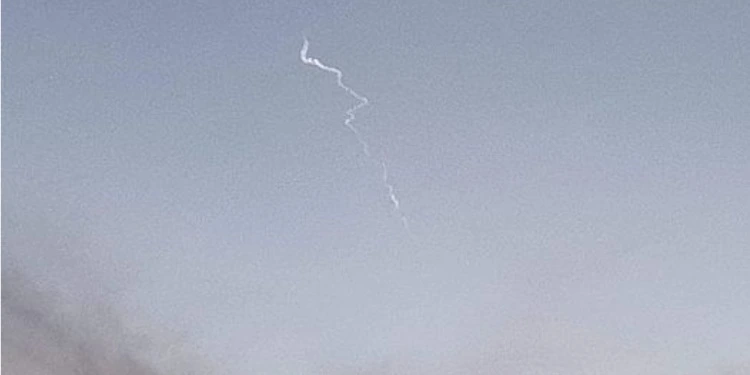SAN LUIS POTOSÍ, Mexico.- Cuban experts are investigating a trail of smoke that could have been caused by the fall of a meteorite in the province of Matanzas, as confirmed by the magazine Technical Youth in their networks social.
According to the note, users On social networks they reported having observed a trail of smoke in the sky on Thursday afternoon, which mobilized meteorologists who launched hypotheses about the trail in the air.
Technical Youth He explained that it does not seem to be a typical condensation trail from an airplane, but rather processes such as the fall of meteorites.
“This trace in the air does not appear to be a common airplane condensation trail. However, until the discovery of a fragment on land is confirmed, it cannot be assured that it is a meteorite. “It is possible that it was a fireball or a small car,” the newspaper stated.
Henry Delgado Manzor, an aeronautical meteorologist from Matanzas, indicated that so far no sound or noise associated with the phenomenon has been reported, which suggests that there was no fragmentation and it was probably a small object.
He also assured that this phenomenon is not related to twilight effects caused by rocket launches from Florida, in addition to the fact that no planes were registered in the area during that time.
Without confirmation of the discovery of a fragment on land, it cannot yet be certain that it is a meteorite.
In the coming days, when the international fire detection systems are updated, more information could be available to reveal what caused the phenomenon.
Attracted by the force of gravity, every year tens of thousands of pieces of rock, detached from the tails of comets, asteroids and other objects, penetrate the Earth’s atmosphere at a remarkable speed of up to 70 meters per second, managing to reach the surface. .
Such fragments are called meteorites, and constitute a valuable source of information when searching for new data on the origin of the solar system. Cuba, curiously, has been the scene of the fall of several of these celestial bodies.
This year, researchers detected that the rock that has gone down in history as the “Cuban meteorite”which has a weight of about 1.3 kg, is not actually a meteorite.
The metallic rock It is part of the exhibition National Museum of Natural Sciences (MNCN-CSIC) from Madrid and was included in the collection in 1871.
However, it is a piece of steel or metallurgical foundry iron, known as industrial slag.
The conclusion followed an investigation by Aurelio Nieto, curator of the Geology collection at the MNCN, together with the researcher from the University of Havana, Yasmani Ceballos-Izquierdo, and Johanset Orihuela, from the Florida International University.
The results of new laboratory studies made in the Center for Advanced Studies of Cuba, commissioned by the Institute of Geophysics and Astronomy (IGA), have corroborated that the number of meteorites fallen on the Island amounts to a total of five, from an initial list supposedly of ten.















